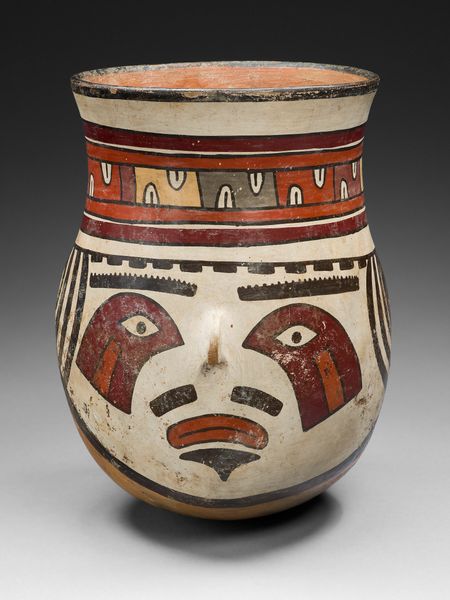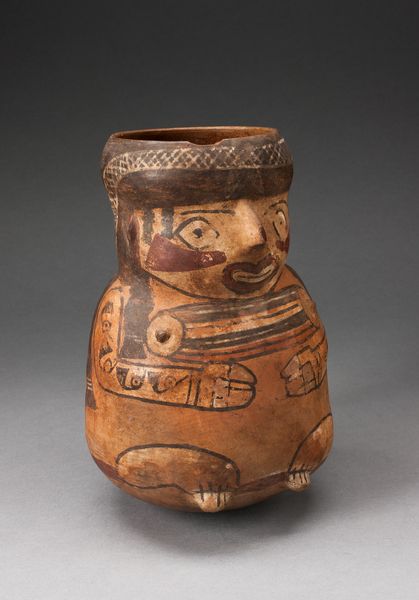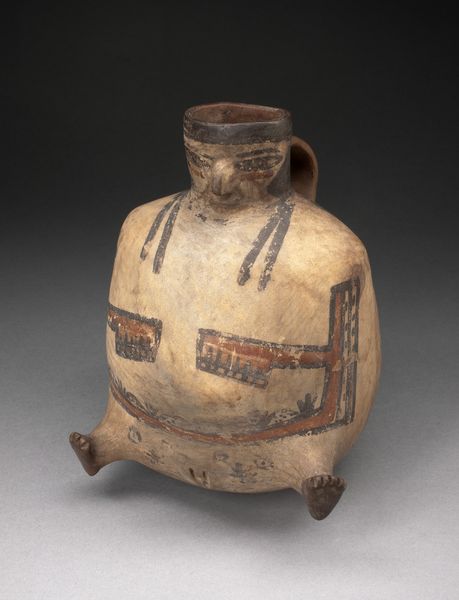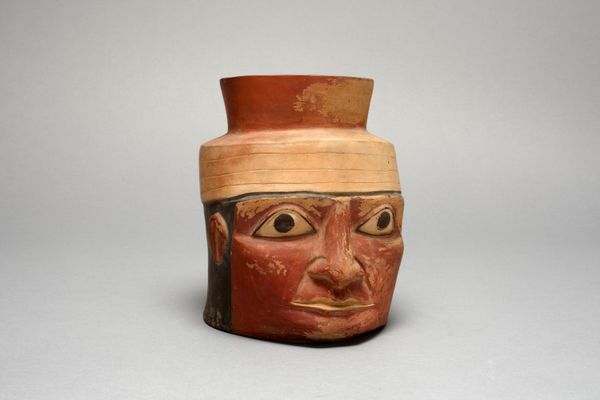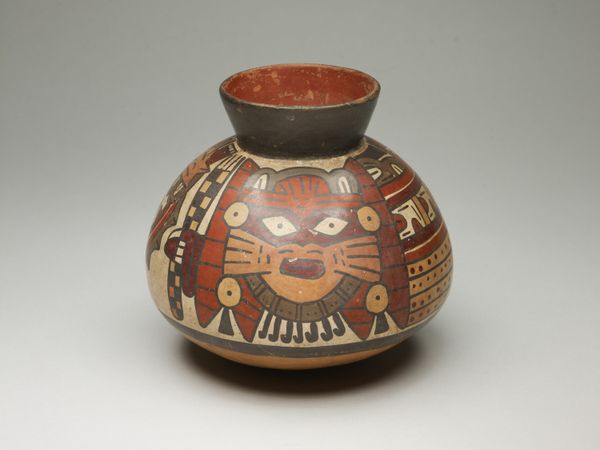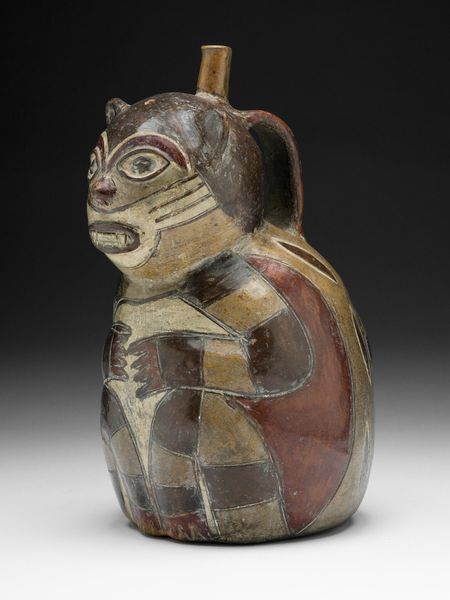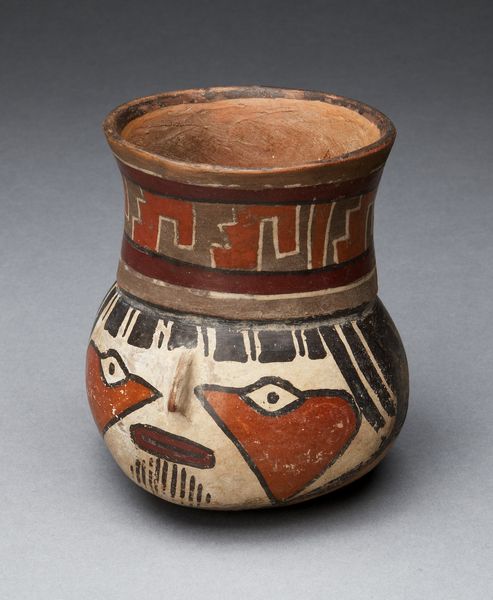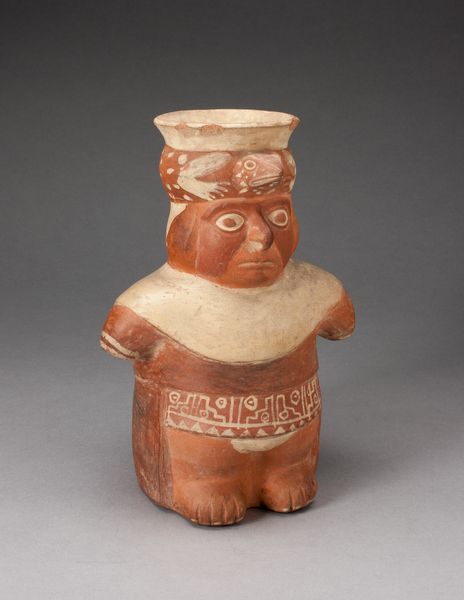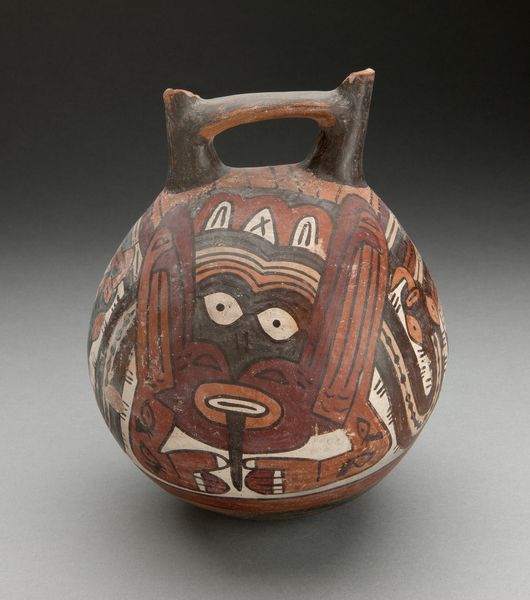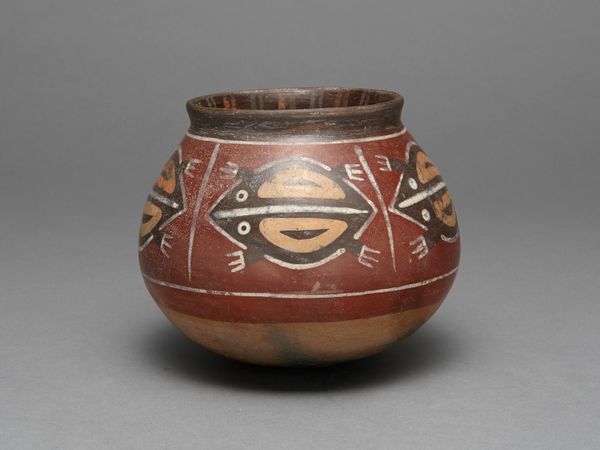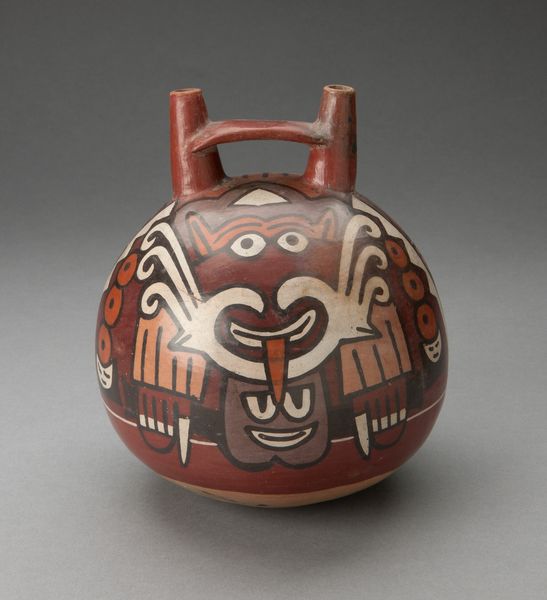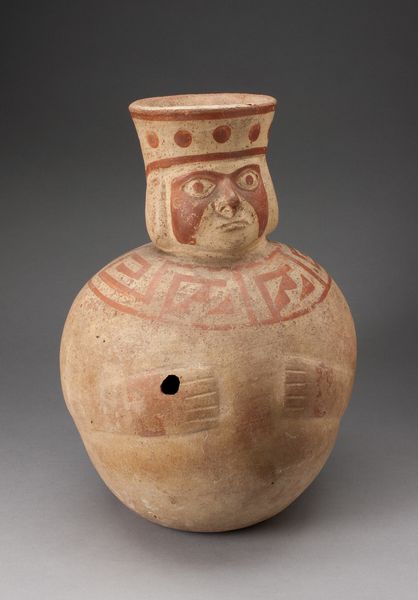
ceramic
#
ceramic
#
figuration
#
indigenous-americas
Dimensions: 20.8 × 14.3 cm (8 3/16 × 5 5/8 in.)
Copyright: Public Domain
Curator: Before us, we have an extraordinary artifact titled "Rounded Beaker in the Form of an Abstract Bird." Created by the Nazca people, likely sometime between 180 and 500 AD. It resides here at the Art Institute of Chicago. Editor: It’s arresting. Those huge eyes staring out...it gives the whole piece a very direct, almost confrontational quality despite being, well, a pot. Curator: Indeed. And it’s ceramic, which speaks volumes about the Nazca's sophisticated understanding of materials and firing techniques. Considering it's a functional object, it reveals a complex symbolic representation through its striking figuration. Editor: Precisely. Ceramic isn't just clay; it’s earth transformed through labor and skill. And look at the geometric designs interplaying with that bird motif, how were these vessels circulated, consumed, or displayed in Nazca society? Curator: Good questions. These vessels played vital roles in Nazca society, featuring in ceremonies and possibly even burials, reflecting both religious beliefs and the stratified social order. Bird motifs were central to Nazca iconography, likely connected to fertility or spiritual transcendence. Editor: So, what meaning do the colours imbue it with, particularly in their local landscape? Were these materials accessible or did obtaining them entail some political, and subsequently social weight? It could inform who possessed, commissioned or produced items like this. Curator: Colour and material certainly hold importance. The Nazca obtained pigments from minerals found locally, implying skilled labor was employed in grinding and processing materials. That would suggest certain colours or complex design was more likely connected with elite patronage. The vividness we see highlights the role of aesthetics and visual communication in articulating social roles and beliefs within Nazca society. Editor: I appreciate you sharing that context. Suddenly, this isn't just a beautiful pot, it’s a rich document filled with knowledge. Curator: It illustrates how art history helps unpack layers of meaning embedded within even utilitarian forms, bringing voices of the past into present dialogues about humanity and material culture.
Comments
No comments
Be the first to comment and join the conversation on the ultimate creative platform.
